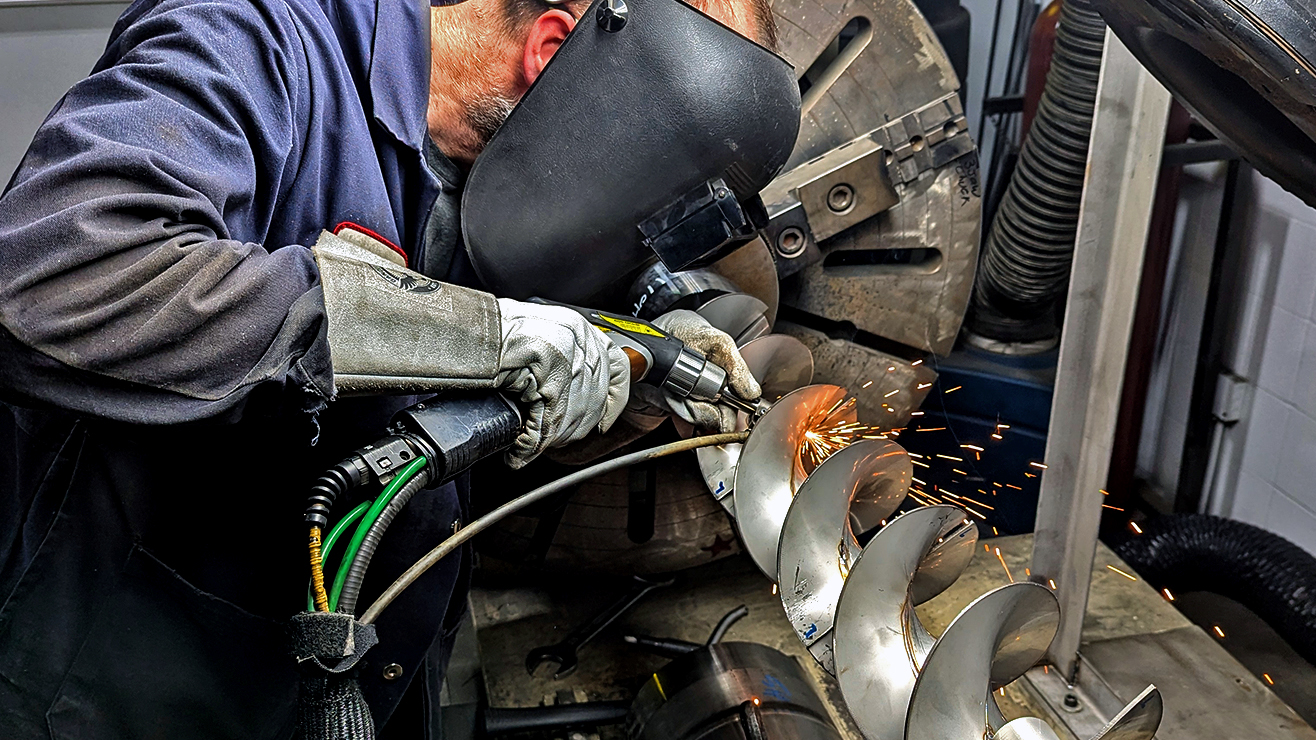Success Story: Apollo Machine

With 100,000 barrels at risk each day, Apollo Machine uses LightWELD to make critical field repairs to heavy oil sands equipment.
What’s a Success Story?
There are a lot of reasons why our customers invest in LightWELD: it might solve a specific problem for them, or help them be more productive, or they might just be excited by the technology. Whatever the reason, we love talking to them and learning about their businesses.
Our success stories are a closer look at some of our customers, what they’re working on, and how LightWELD has helped them find success. We hope that their stories can help give you a better idea of how the industry is using and benefiting from LightWELD.
About the Company
Apollo Machine comes from humble beginnings, with founder Robert Norton starting the company in 1971 with nothing but a rented manual lathe. In the decades since, Apollo has grown significantly, now employing approximately 300 employees as one of the largest machine shops in Western Canada. With a focus on quality, precision, and investing in their employees, Apollo brings a variety of capabilities to the table, including machining, welding, and cladding.
Behind the company’s drive to never stop innovating and improving is R&D Manager Doug Hamre. Doug’s enthusiasm for manufacturing is infectious, and we lost track of time discussing his myriad laser projects with him.
Industry
Fabrication
Company Size
201-500
Location
Alberta, Canada
“LightWELD has let us take on more business. We now have customers coming to us when conventional welding isn’t working.”
The Challenge
With oil sands production approaching record highs in Alberta, mining operations are under pressure to keep production running 24/7. This means minimizing disruptions and downtimes caused by maintenance and repairs. Doing so is easier said than done, however, as harsh conditions and high utilization result in a lot of wear and tear on specialized and large-scale equipment.
One Alberta mining operation was challenged by a crack in the wall of one of these large pieces of equipment. Manufactured to demanding pressure vessel quality standards using A516 grade 70 steel, the equipment needed repairs on a ¾” thick plate which measured 25 feet tall and 65 feet long.
Repairs were proving to be difficult. The job was not suited to MIG welding due to in-service fatigue and the relatively high heat input of arc-based welding. Traditional repair methods risked microstructural changes that could worsen the fatigue issue, create residual stresses, or leave defects that could lead to premature failure.
Replacement was not an option either as lead times on replacement parts were estimated at more than 12 months. The production losses of unscheduled downtime were estimated at approximately 100,000 barrels of oil per day, the equivalent of more than 7 million USD at the time of writing, not to mention associated productivity bottlenecks.
The Solution
Due to the company’s strong history of successful work with customers in the oil sand industry, the customer reached out to Doug and Apollo. With a strong background in laser welding and cladding, Doug immediately recognized the benefits of laser welding for this repair.
“At this point, I’m basically working with LightWELD full time.”
Enter LightWELD. Doug, a self-professed fan of LightWELD, had introduced the technology to Apollo previously and the company’s welders had been using it to achieve great results. In this case, however, the part in question was far too large to bring back to Apollo’s facility and would need to be welded in the field.
Not one to be deterred, Doug worked with the customer’s safety team to create safety manuals and establish procedures to meet the required codes to enable on site laser welding. The process included installation of a temporary, fully interlocked on-site Laser Control Area.
The work was then ready to begin. Requiring minimal preparation prior to welding, the part was soon laser welded and repaired to a high standard of quality. This was confirmed with a comprehensive evaluation of the repair, which included radiographs and magnetic particle inspection. The weld passed all inspection criteria with no problems.
At the time of writing the repaired equipment has been in service for 11 months, during which it has experienced tens of millions of cycles of fatigue, with no issues. We’d call that a resounding success.


